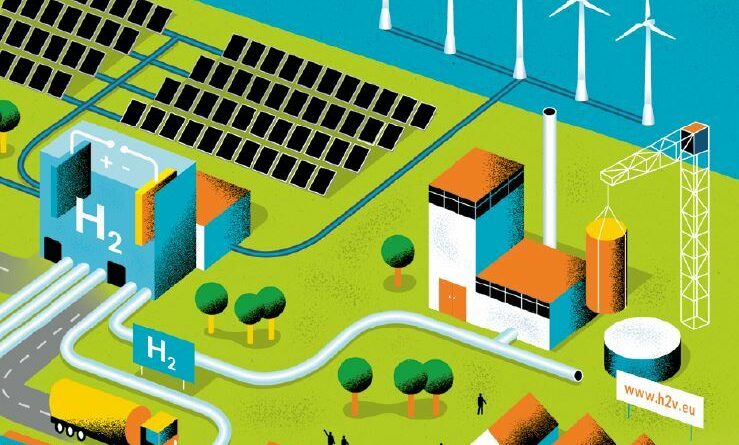
Hydrogen Valleys: Europe’s Pathway to Sustainable Competitiveness
Supported by the Clean Hydrogen Partnership (Clean Hydrogen JU), Hydrogen Valleys are the type of strategic initiative Europe needs to achieve its competitiveness goals while continuing to work towards climate neutrality.
Europe is at a critical juncture in the global race towards sustainability and economic resilience, with Hydrogen Valleys emerging as a key tool for securing its competitive edge.
The Clean Hydrogen Partnership has been a pioneer in supporting such initiatives, recognizing their potential to transform Europe’s energy landscape. Hydrogen Valleys function as integrated regional ecosystems, encompassing hydrogen production, storage, distribution, and end-use applications. By uniting multiple sectors—including mobility, industry, and energy—the valleys exemplify how renewable energy can be leveraged to enhance regional competitiveness, create jobs, and stimulate economic growth.
Hydrogen Valleys support critical EU policy objectives, such as those for a more competitive European industry – the competitiveness compass and the clean industrial deal, and the REPowerEU Plan for affordable, secure and sustainable energy for Europe, which aims to double the number of Hydrogen Valleys in the EU by 2025.
With €215 million allocated by the Clean Hydrogen JU to 18 Hydrogen Valley projects to date, these initiatives have attracted more than €1.2 billion in investments, underscoring Europe’s commitment to regional integration, industrial growth, and climate neutrality. Each euro invested by the Clean Hydrogen JU has attracted substantial private co-funding, highlighting the trust and confidence in hydrogen as a competitive solution in several sectors.
By creating demand for hydrogen solutions, Hydrogen Valleys stimulate European supply chains, attract private investment in hydrogen production, and support the scale-up of key manufacturing sectors such as electrolysers, fuel cells, and storage technologies. This aligns directly with the Draghi Report’s call for Europe to regain its competitive edge by fostering industrial scale-up and reducing dependence on foreign supply chains. Moreover, Hydrogen Valleys serve as innovation hubs where European companies refine technologies, build local expertise, create jobs, and improve cost-efficiency – key to securing the EU’s leadership in the hydrogen economy.
Projects like TRIĒRĒS in Corinthia, Greece, are optimizing green hydrogen supply chains and significantly reducing greenhouse gas emissions. Recognized as the “Hydrogen Valley of the Year 2024,” TRIĒRĒS focuses on developing infrastructure and logistical models to optimize the green hydrogen supply chain.
The project aims to produce 2,410 tonnes of green hydrogen annually through electrolysis, utilizing renewable energy sources to decarbonize the economy and reduce greenhouse gas emissions.
Similarly, the Green Hysland initiative in Mallorca has established a robust renewable hydrogen production and distribution system, demonstrating how islands can achieve energy independence and sustainability. This project is deploying a fully integrated hydrogen ecosystem on the island of Mallorca. It encompasses 7.5 MW of electrolysis capacity linked to local photovoltaic plants, supplying green hydrogen for mobility, heat, and power applications. By integrating production, distribution, and end-use, Green Hysland aims to set a precedent for decarbonizing island economies and contributing to the EU’s net-zero targets.
In France, the IMAGHyNE project in Auvergne-Rhône-Alpes represents one of Europe’s largest hydrogen valleys, significantly scaling up electrolyser capacity and creating a flexible, resilient hydrogen infrastructure.
With a budget of €200 million, this six-year project aims to deploy 57 MW of new electrolysis capacity to produce 8,000 tonnes of low-carbon hydrogen annually. The initiative integrates a flexible hydrogen supply chain, including underground storage and distribution infrastructure, to meet the energy needs of high-emitting sectors.
In conclusion, Europe’s Hydrogen Valleys are not just about technology; they are vital engines of economic resilience, innovation, and competitiveness. Through strategic investments, targeted innovation, and regional collaboration, these projects position Europe firmly at the forefront of the global clean energy transition, delivering on economic, environmental, and strategic objectives.




